Russula foetens Pers. - Stinking Brittlegill
Phylum: Basidiomycota - Class: Agaricomycetes - Order: Russulales - Family: Russulaceae
Distribution - Taxonomic History - Etymology - Identification - Culinary Notes - Reference Sources
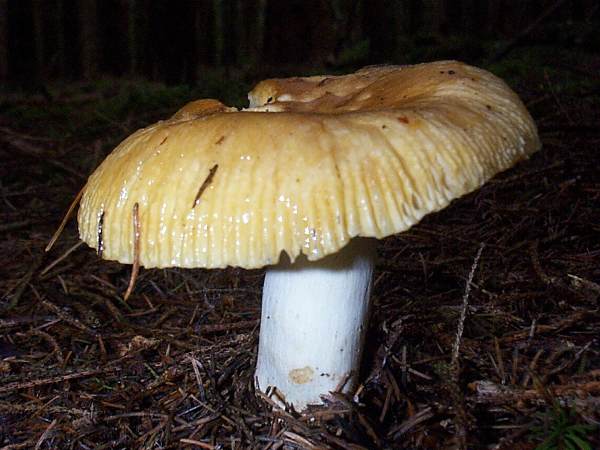
Russula foetens, the Stinking Brittlegill, has a cap diameter of up to 15cm. Young specimens give off an unpleasant acrid smell which becomes increasingly fishy as the fruit bodies mature; however, because of its colouring it cannot be confused with the red-stemmed Crab Brittlegill even when, as sometimes is the case, the latter has an ochre cap.
The Stinking Brittlegill smells as though it should be inedible, and indeed it is - see below.
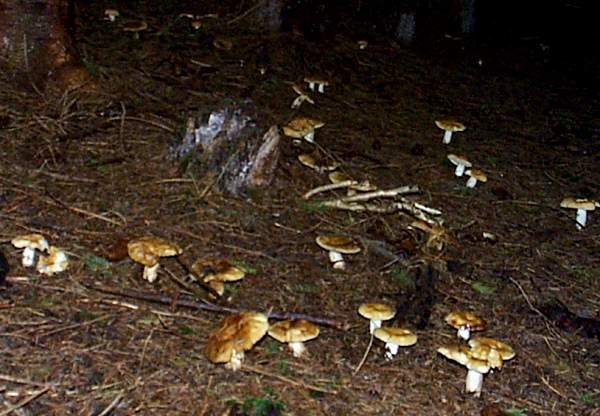
Distribution
The Stinking Brittlegill is widespread and fairly common in Britain and Ireland as well as in many other European countries. Apparently equally at home in either broadleaf or coniferous woodland, this is one of a small number of brittlegill species that really do know how to swarm - see left.
There are reports of Russula foetens occurring in North America, perhaps more commonly in the north east.
Taxonomic history
The Stinking Brittlegill was described in 1796 by Christiaan Hendrik Persoon, who established its currently-accepted scientific name Russula foetens.
Synonyms of Russula foetens include Agaricus foetens Pers.
Etymology
Russula, the generic name, means red or reddish, and indeed many of the brittlegills have red caps (but many more are not, and several of those that are usually red can also occur in a range of other colours!).
The specific epithet foetens means stinking (as in foetid, or fetid as some prefer to spell it).
Russula foetens, even at its very best, is not a pretty mushroom. Add to that its vile smell and the fact that it is inedible and possibly poisonous, and you realise just how little this brittlegill has got going for it. In misery, company may help, and Russula subfoetens is a smaller, typically somewhat more swarthy but otherwise very similar brittlegill that some authorities - Class as merely a variety of Russula foetens. Like people, it seems, some mushrooms are just born to be scorned!
Identification guide
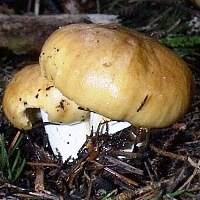 |
Cap5 to 12cm in diameter and hemispherical when young, becoming more or less flat or slightly depressed in the centre when fully developed. Honey brown and rather blotchy, the cap surface is viscid and develops strong radial furrows and warty bumps as it ages; peels to about 50%. |
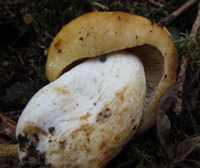 |
GillsThe narrow, adnexed gills are moderately close together; they are very brittle. Initially cream, the gills darken with age and develop rust spots. Stem15 to 40mm in diameter and 4 to 8cm tall, the brittle stems are white and solid, staining brownish and developing internal cavities as they age. |
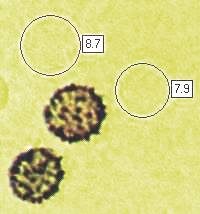 |
SporesGlobose, 7.5-10 x 6.5-9μm, with large isolated (not networked) spiky warts up to 1.5μm tall; with a germ pore. Spore printPale to mid cream. |
Odour/taste |
Initially with a rancid oily smell that with age becomes more like rotting fish; the taste is also unpleasant and rather acrid, especially the gills. |
Habitat & Ecological role |
Ectomycorrhizal, in coniferous and broad-leaf woodland, often in large groups. |
Season |
July to November in Britain and Ireland. |
Similar species |
Russula grata is a common brittlegill typically somewhat smaller but otherwise very similar to Russula foetens; it smells much more pleasant, of bitter almonds. Russula illota, a rare species in Britain, and considered by some authorities as a subspecies of Russula grata, is also similar in appearance, habitat and season. Few people can tell these species apart without resorting to microscopic examination. |
Culinary Notes
This is an inedible mushroom and considered by many authorities to be a toxic toadstool. When gathering mushrooms for food the Stinking Brittlegill should therefore be avoided.
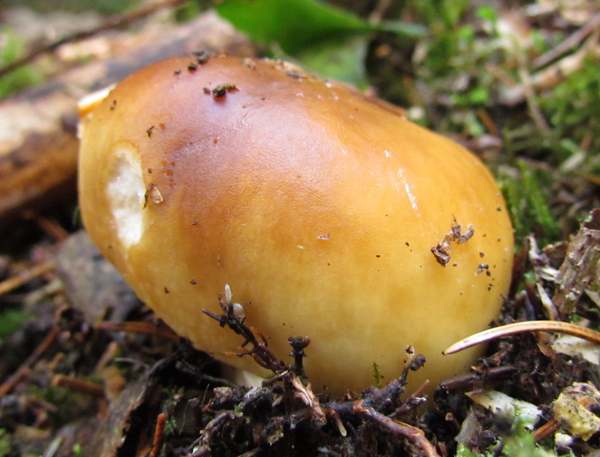
Reference Sources
Pat O'Reilly (2016). Fascinated by Fungi, First Nature Publishing
Geoffrey Kibby (2011).The Genus Russula in Great Britain, published by G Kibby.
Roberto Galli (1996). Le Russule. Edinatura, Milan.
Paul M. Kirk, Paul F. Cannon, David W. Minter and J. A. Stalpers. (2008). Dictionary of the Fungi; CABI.
Taxonomic history and synonym information on these pages is drawn from many sources but in particular from the British Mycological Society's GB Checklist of Fungi.
Fascinated by Fungi. Back by popular demand, Pat O'Reilly's best-selling 450-page hardback book is available now. The latest second edition was republished with a sparkling new cover design in September 2022 by Coch-y-Bonddu Books. Full details and copies are available from the publisher's online bookshop...

